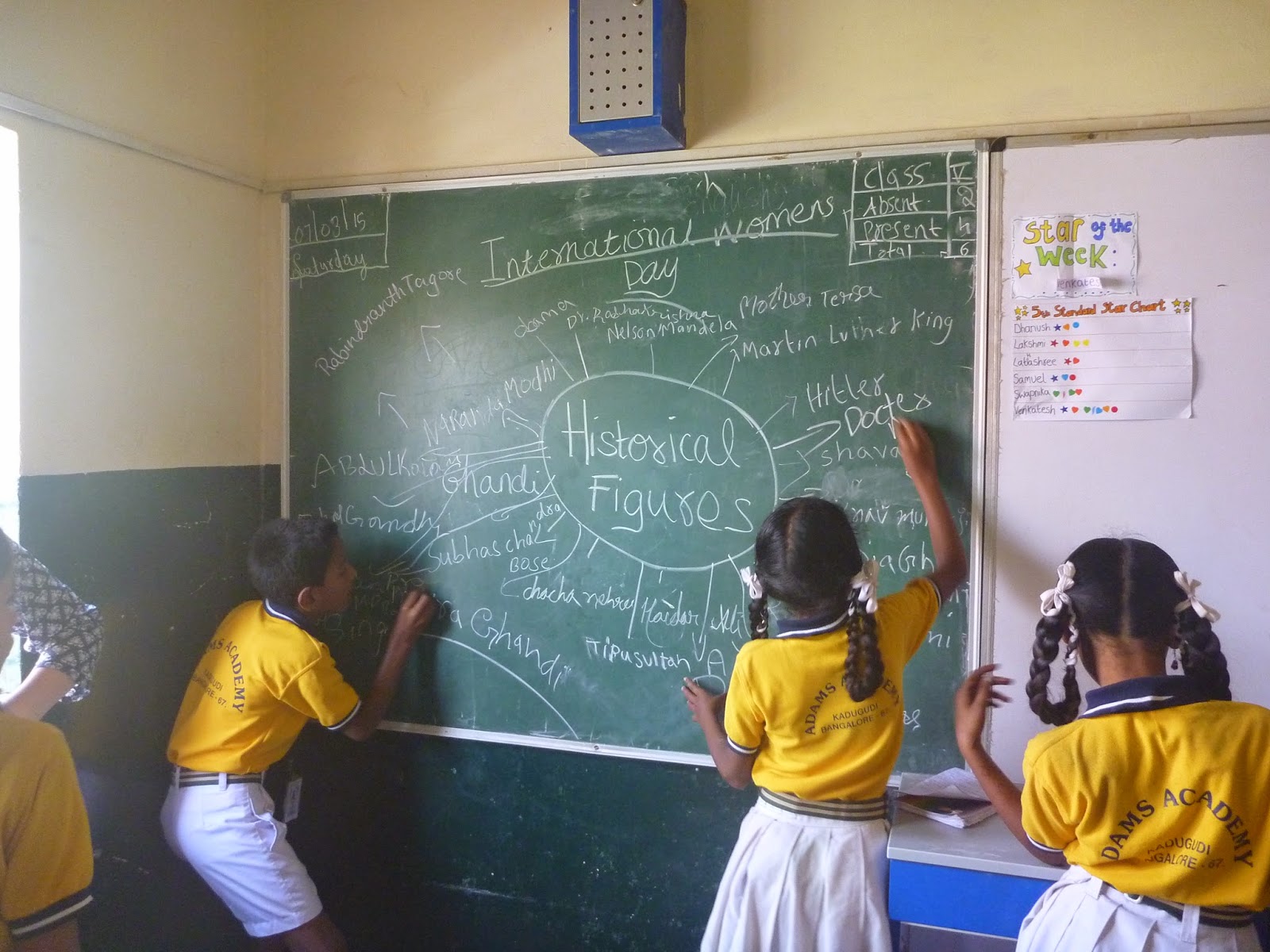We recently decided to celebrate a few global citizenship days
to liven up school a bit; we did Valentine’s Day on 14th February, UNESCO
International Mother Language Day on 21st February and International
Women’s Day on 6th and 7th March.
For Valentine’s Day we got the children to draw a heart and
write inside about someone that they loved, my favourite was by one of the
girls in 6th, who wrote “I love my parents because they give us a
lot of love and they were our first teachers.”
On UNESCO International Mother Language Day we wanted to
celebrate the wide range of languages spoken in the school and learn from each
other. We got each child to come up with 5 words in their mother tongue, which they then taught to the rest of the class, and we taught them 5 unusual English
words. The languages we had were Kannada, Telegu, Urdu, Hindi, Tamil and
English. We found it really interesting and I’m so impressed that the kids
speak so many different languages so easily.
International Women’s Day is on 8th March, but we
decided to celebrate it on the 6th and 7th in school. We
began by asking the children to write down all of the words that came into
their heads when they thought about women and girls. We got some excellent
responses such as “girls need freedom” and “girls are strong” and some more
controversial ones, such as “boys provide money for girls” and “girls clean and
cook” which sparked some interesting discussions. One boy in 7th
believed very strongly that women should not work and that they should be
housewives, and some girls were arguing against this. I also found it really
interesting when Cyril in 6th said that girls do better at school
because they “study day and night” whereas boys “do two hours of work or less.”
We had a discussion about whether girls and boys are treated equally and if the
children had ever been treated differently because of their gender. One boy
said that sometimes if he tries to help in the kitchen, his mum tells him to "get
out because it isn’t his place.”
Then we got one girl and one boy to lie on a big sheet of paper and we drew around them, at the top of one we wrote “I can because I am a girl” and on the other we wrote “I can because I am a boy.” We spoke about the things that children could do, such as learning new languages, playing sports, reading, singing, dancing, and whether both genders could do them. We established that both girls and boys could do all of these things, so we wrote them all inside both the girl and boy outline. This was supposed to show them that they can do anything, regardless of their gender. We did a similar activity with the younger classes and we got some really funny responses; a boy in 1st said “boys and girls can tie their shoe laces” and a girl put “girls and boys can go to the zoo.” The little ones probably didn't understand what we were getting at, but I think they enjoyed a change from normal lessons and being a bit more creative.
On Saturday we asked the children to write down as many historical figures as they could and circle all of the women, and as we’d hoped, there weren't very many compared to the men. The only problem with this activity was that we know very little about Indian history, so we didn't know who half of the people they came up with were. They could have been making some of them up for all we knew, at one point Izzy said: “Was there actually someone called Pooja Gandhi guys or are you making it up?” They seemed pretty genuine though, and we were impressed with the amount of people we had. When I asked them why they thought there were more men than women on their list, one boy said “because men are stronger miss and women are afraid”, this wasn't exactly what I was thinking of, but luckily some of the other kids understood what I was getting at! Afterwards, we got them to write about an inspirational woman in their lives.
Plus, we celebrated Holi with a few of the kids on Friday!




























No comments:
Post a Comment